Our History
In October of 2021, St. Mark’s on the Campus celebrated its 100th Anniversary. Our celebration activities glorified God, appreciated our parish family, and strengthened our community connections.
A slide presentation was prepared, detailing St. Mark’s earlier years and recent past.
The 75-year time capsule was opened, the contents were reviewed, items were added, and repositioned as the 100-year time capsule.
An oral memory sharing session was recorded.
The new concert grand piano was dedicated at a recital by Kurt Knecht (a past St. Mark’s music director) and Ross Mosier (the current music director).
A parish talent show celebrated our talents as vocalists, musicians, writers, poets, actors, comedians, and - yes - appreciative audience.
In a special Holy Eucharist, the Sanctuary and the congregation were rededicated to the glory and service of God.
An Episcopal Church for University Students
…or how University Chapel (and eventually St. Mark’s on the Campus) came to be
Many of you know that University Church, later University Chapel, became St. Mark’s on the Campus. But do you know how University Church came to be? History tells us that, as early as 1919, after reading a report of work carried on at the University of Nebraska by Rev. Frederick Thompson, PhD, vicar of St. Luke’s, the Board of Religious Education prayed that “in the near future a Church University House may be at Lincoln so that our boys and girls attending the University may be cared for by the church during the nine months they are away from home.”(1)
In May 1920, The Committee on the State of the Church reported at Annual Council: “The growth of the city of Lincoln and its suburbs, together with the presence of the State University there, make imperative a careful study of the situation to the end that some definite plan may be evolved for the Church to realize its mission more fully in that important center.”(2)
After a period of negotiations between Bishop Shayler and the Warden and Vestry of St. Luke’s, the old St. Luke’s Church was leased for a period of three years from the Vestry without payment for the use of the building or facilities. The church would be renamed University Church. Rev. Linn Warren McMillin became the first Rector and Priest-in-Charge of the newly formed University Church on 14 September 1921. He agreed to serve for three years but was to remain with University Church until his retirement in 1948. Fr. McMillin was welcomed by Bishop Ernest V. Shayler during his address at Annual Council in 1922. During the Council, Bishop Shayler also reported the old St. Luke’s Church was leased to the Diocese for a period of three years, without monetary consideration. After a thorough renovation and many needed repairs, the Church was re-opened under the name of University Episcopal Church.
Lead by Fr. McMillin, often referred to as “Fr. Mac,” the student membership grew to about 150. There were also faculty members and several of the old congregation who preferred the old St. Luke’s. There was large choir with a high standard of music. During the early 1920s, there were only a handful of other congregations in Nebraska larger than the University Church.(3) Bishop Shayler spent a good portion of his 1922 report to the Annual Council praising the successes of the new church.
University Episcopal Church Exterior, about 1921
In 1922 the University Episcopal Church was in a unique position in both Church and college circles. It was the only separate church for college students in the United States. “The University Church is not parochial in any sense and has no parish organizations, but is one of the Diocesan institutions, under the control of the Bishop.(4) The church was run primarily by the students and was something of an experiment. Because of its unique status of the University Church was watched closely by bishops and others interested in religious education.
University Episcopal Church Interior, about 1921
The structure was a “Student Cabinet” composed of eight students and Fr. McMillin. The student cabinet operated much like a parish vestry. The acolytes, ushers, altar guild, and lay readers were also students. The land at 13th and R Street was deeded by the Warden and Vestrymen of St. Luke’s Church to The Diocese of Nebraska on 31 July 1924, for one dollar. Over the following years, the University Church weathered the difficulties of the Great Depression, WWII, and assorted local and state events with student membership following.
After the war, society was changing, and the University Church had to change with it. Watch this space where the story will continue. You will see pictures of the original plans for the current SMOC, information on how the funding for University Church was accomplished, and how the University Church/Chapel became St. Mark’s on the Campus.
(1) Journal of Proceedings of the Fifty-Second Annual Council of the diocese of Nebraska, 21-22 May 1919, Pg. 84.
(2) Journal of Proceedings of the Fifty-Third Annual Council of the Diocese of Nebraska, May 19-20, 1920, Pgs. 66-67.
(3) Journal of Proceedings of the Fifty-Fifth Annual Council of the Diocese of Nebraska, January 18-19, 1922, Pg. 38. 4The Crozier Newsletter, May 1922, Pg. 9.
(4) The Crozier Newsletter, May 1922, Pg. 9.



